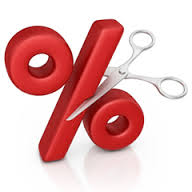
From Tim Toohey at Goldman Sachs:
Today’s speech reinforced that the RBA has set quite a high hurdle for further policy easing, suggesting that the RBA cannot be expected to “fine tune” the recovery, particularly in regard to non-mining investment. Governor Stevens’ effort to downplay the stronger 4Q2013 CPI, inflation pressures more broadly and the February job reports reinforces our view that there is little prospect of rates being raised anytime soon. Overall, we share the Governor’s view that there are promising signs of recovery. The Governor acknowledged that we are likely to see a “boom” in new dwelling construction, consumption to grow broadly in line with income and some delay in non-mining investment to rise to fill the gap left by declining mining investment. While this is consistent with our previously published views, our forecasts embrace a faster decline in commodity prices, a nearer term decline in mining investment, ongoing subdued household income growth and intensifying fiscal headwinds. Governor Stevens also acknowledged the AUD as one of a “full panoply of risks”, and with a ~+40bp post-speech rally to ~0.92, it has returned to the level seen last November when the Governor characterised it as “uncomfortably high”. By mid-2014 we expect that financial conditions will tighten in a falling commodity environment, fiscal policy will be tighter post the May Budget and non-mining GDP growth will likely be insufficient to offset the drag from the mining related sectors. We continue to lean towards one further cut this cycle (-25bp in July), and a very gradual tightening cycle to be delayed to 2Q2015.
And Stephen Walters at JP Morgan:
Reserve Bank Governor Glenn Stevens today delivered a speech on the domestic and global outlook at an investment conference in Hong Kong (and later will be a panel discussant on unconventional policy). The Governor’s speech covered familiar terrain, but he emphasized more than once that there is a “very substantial” degree of uncertainty around the outlook, an “unavoidable” fact that makes drawing firm conclusions unusually difficult. The only explicit policy guidance came when he re-used the familiar phrase that a “period of stability” on interest rates is likely.
We suspected that Governor Stevens, who again pondered today why many local forecasters are so pessimistic, might drink from his familiar “half-full” glass today and, indeed, there were flourishes of constructiveness around housing, in particular. These, however, were tempered by more sober references to uncertainty and risks. The Governor, of course, did an exemplary job explaining the current thinking of the Bank – he always does. The problem is that the current outlook is shrouded in so much uncertainty that drawing firm conclusions is fraught and, perhaps, even pointless until some of the doubts are resolved.
Interestingly, Stevens declined to give stubbornly-high AUD another kick lower, despite the Governor being offered the ideal opportunity in the Q&A session. There was, for example, no return to describing AUD as “uncomfortably high”, a phrase officials had favoured as recently as December. Instead, the Governor repeated the mantra that a lower AUD would aid the rebalancingin the economy. The lift in resource exports alone will not be sufficient to fill the growth gap left by falling investment in the resources sector, which will “decline significantly”.
On inflation, it was interesting that Mr. Stevens hopes the recent CPI data “conveyed at least some genuine information”. This sticks to the theme in official commentary that, although the latest print was unexpectedly high, the staff believes there possibly is loud statistical noise drowning out the signal. Later, Stevens repeated the thinking that inflation will be “consistent with target” from here, partly because of labour market weakness and benign wages growth. And, in answering a question,
Stevens said he didn’t see danger of a serious outbreak of inflation.
Mr. Stevens’ discussion of global themes sounded all too familiar – lift in the US, improvement in Europe and policy tools working in Japan. He delivered an extended discussion of the outlook for China and the problems in the so-called shadow banking system, in particular, but didn’t draw strong conclusions on how all this will play out. On balance, he sounded pretty constructive.
The RBA’s public narrative seems not to have changed much at all since the easing bias was dumped back in February. Officials seem content with current policy settings and the level of AUD, for that matter, and seem happy that earlier policy easing is working, particularly in lifting prices and activity in the housing market. In fact, Mr. Stevens indicated after the speech that a “boom” in residential construction is on the way.
The rotation from mining investment as the main source of GDP growth (the “handover”, according to Stevens, from a boom of “truly epic proportions”) remains a work in progress, but officials seem confident there will be sufficient lift outside mining to fill the large growth gap. Indeed, there are “promising signs” in this regard. He sounded more cautious on the outlook for employment, though, and still expects the jobless rate to rise.
We are less sanguine, and still expect a policy ease later this year. AUD simply refuses to stay below 90 US cents (it touched a 3-month high today), despite the lower terms of trade, the jobless rate still looks likely to keep climbing as the non-mining economy only slowly fills the yawning gap left by the mining capex cliff, and the noises from Canberra still hint at a tough Budget in May.
We expect Treasurer Hockey to unleash a material fiscal drag on top of the tightening already announced, mainly on the expenditure side of the public accounts.

